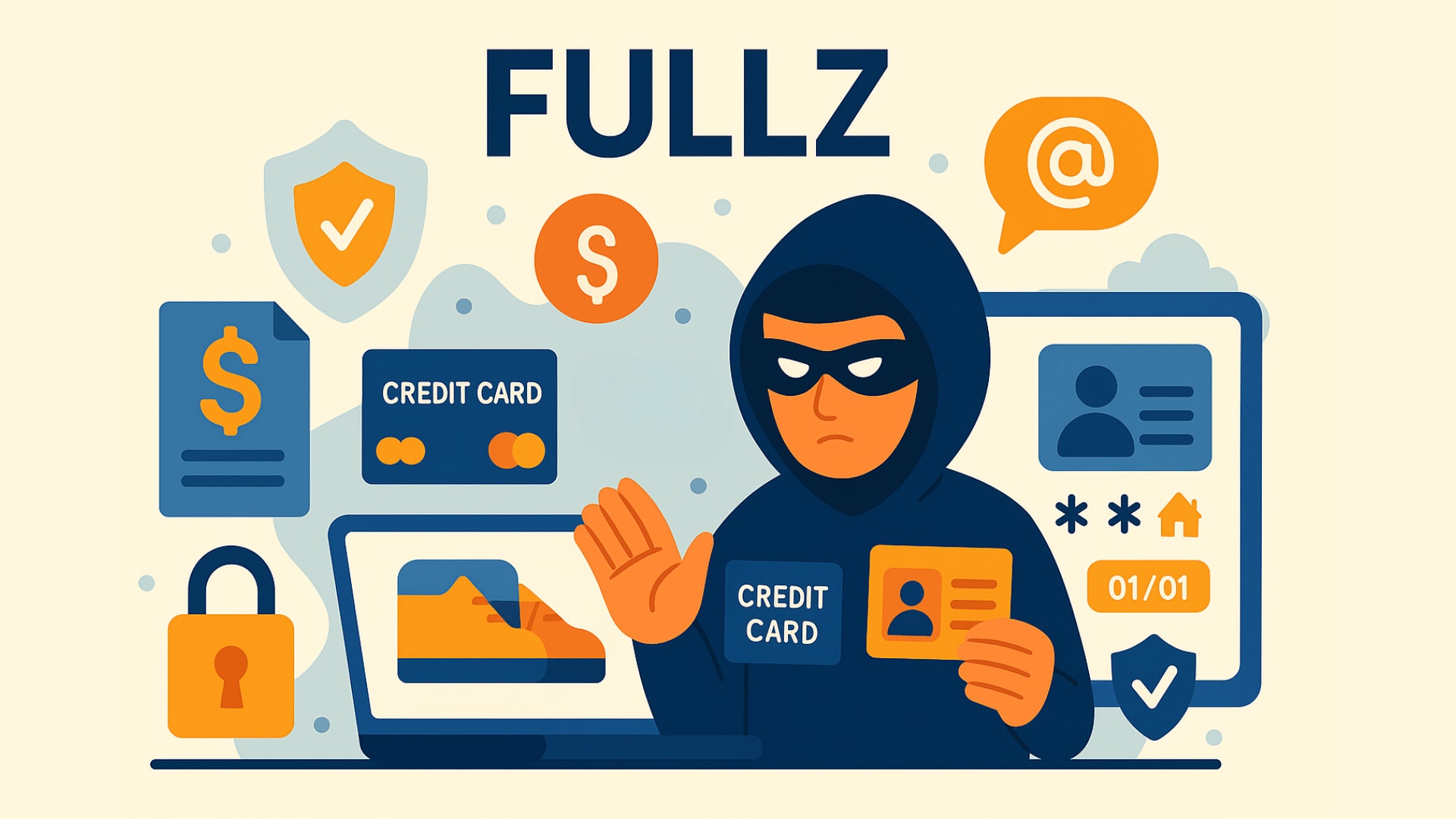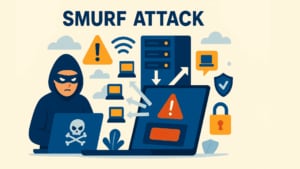
Within cybersecurity circles, the term “Fullz” has become shorthand for one of the most potent tools in the arsenal of cybercriminals. Often encountered in connection with data breaches or dark web transactions, Fullz refers to full identity profiles that allow fraudsters to impersonate victims with alarming accuracy. For professionals managing digital platforms or customer data, understanding what Fullz entails and why it poses such a serious risk, is an essential step in building robust cyber defenses and protecting user trust.. For business owners, IT managers and decision-makers without deep cybersecurity backgrounds, understanding what Fullz are and how they are used, is crucial to protecting both company assets and customer trust.
This article explores the concept of Fullz, how cybercriminals acquire them, the damage they can inflict, and most importantly, how organisations can protect themselves in an age where digital identity is both powerful and vulnerable.
Table of contents
What Exactly Are Fullz?
“Fullz” is cybercriminal slang for a complete package of an individual’s personal and financial information. The term comes from the idea of having the “full” details needed to impersonate someone entirely in digital or financial contexts. For a cybercriminal, a Fullz package is a goldmine. It enables them to commit various types of fraud and identity theft with high precision.
Unlike partial data sets that may only include a name or an email, Fullz usually consists of the victim’s full name, date of birth, current and past addresses, Social Security Number (or local equivalents), phone number, and email address. More comprehensive Fullz can also include credit card numbers with CVV codes, banking information, passport or driver’s license details, and even medical records.
Cybercriminals differentiate between types of Fullz: “ID Fullz” focus on personal identification details; “CC Fullz” are heavy on payment and credit card data; “Healthcare Fullz” contain medical information, and “Dead Fullz” relate to deceased individuals — still valuable for fraud, given the lower likelihood of detection.
How Hackers and Fraudsters Acquire Fullz
The methods for acquiring Fullz are diverse and increasingly sophisticated. One common route is through large-scale data breaches, where attackers infiltrate corporate or governmental databases to steal thousands or even millions of personal records. These breaches may go undetected for months, allowing criminals ample time to extract and monetise data.
Social engineering and phishing are also powerful tactics. In these attacks, cybercriminals trick individuals into voluntarily handing over sensitive information, often by posing as trusted institutions via email, SMS, or fake websites. Meanwhile, malware and spyware silently collect data from infected devices, including login credentials, keystrokes, and saved financial details.
Physical methods exist too. Devices like skimmers placed on ATMs or point-of-sale terminals can capture credit card data. Simpler still, criminals might engage in dumpster diving to retrieve discarded documents containing sensitive information.
Once gathered, these data sets are compiled and sold as Fullz on dark web markets and private forums. The price varies based on the quality, completeness, and freshness of the data, and bulk purchases often receive discounted rates.
Why Fullz Are So Dangerous
Fullz offer cybercriminals the tools to cause devastating damage. With such complete information, an attacker can impersonate the victim in financial, governmental, or healthcare contexts. This opens the door to a wide array of fraud tactics.
Identity theft is the most direct and widespread use. Criminals use Fullz to open new credit cards, apply for loans, or file fraudulent tax returns — all under the victim’s name. In some cases, they bypass two-factor authentication by using the victim’s phone number and personal questions, giving them full control over online banking or email accounts.
Account takeovers are another frequent outcome. Here, criminals use Fullz to log into and control existing accounts, particularly in e-commerce, financial services, and cryptocurrency platforms. They may change passwords, siphon funds, or use the account to conduct further fraud.
Additionally, Fullz play a role in synthetic identity fraud, where real data is combined with fake information to create entirely new, untraceable identities. These synthetic identities can then be used to exploit credit systems, commit insurance fraud, or bypass background checks for employment.
Impact on Individuals and Businesses
For individuals, the aftermath of Fullz-based fraud can be traumatic. Victims often face financial loss, plummeting credit scores, and the emotional stress of trying to reclaim their identity. Correcting fraudulent activity can take months or even years, during which the individual may be denied loans, jobs, or healthcare.
Businesses suffer equally, if not more. Fraudulent transactions lead to chargebacks, loss of goods, and increased scrutiny from regulators. Companies that suffer breaches face reputational damage, reduced customer trust, and the high costs of remediation. They may also incur fines under regulations like GDPR or PCI DSS for failing to protect sensitive user data.
Moreover, internal operations get strained. Teams must manually review flagged accounts, communicate with affected customers, and manage public relations. In some cases, companies face class-action lawsuits, compounding the financial and operational burden.
How to Protect Against Fullz-Based Attacks
Combating Fullz threats requires a proactive, layered security strategy. Advanced fraud detection systems are essential. These platforms leverage artificial intelligence and machine learning to monitor user behavior, detect anomalies, and flag suspicious activity in real time. Techniques like device fingerprinting help track unique characteristics of user devices, adding another layer of scrutiny.
Robust identity verification processes are equally critical. Organisations should implement Know Your Customer (KYC) protocols, including biometric verification, document validation, and real-time cross-checking with government databases. These steps make it significantly harder for attackers to exploit stolen Fullz.
Multi-factor authentication (MFA) serves as a strong deterrent, as it requires multiple forms of identity confirmation. Encrypting and securely storing customer data is also fundamental, reducing the damage in case of a breach.
Employee training should not be overlooked. Human error remains a leading cause of security failures. Training staff to recognize phishing attempts and understand cybersecurity hygiene can drastically reduce exposure.
Dark web monitoring tools can alert businesses when their data — or that of their users — appears for sale online. Combined with a zero-trust security model, where every device and user must continuously prove their legitimacy, these tools form a resilient security posture.
CAPTCHA: A Key Defense Against Automated Fullz Attacks
A major entry point for Fullz-related crimes lies in automated bot attacks. Bots perform credential stuffing, test stolen data across multiple websites, and exploit login and registration forms. CAPTCHA technology, such as the GDPR-compliant solutions provided by captcha.eu, plays a critical role in stopping these bots before they can do harm.
By distinguishing between human users and automated scripts, CAPTCHA tools prevent bots from harvesting data, brute-forcing passwords, or testing stolen credentials. When paired with other authentication and monitoring systems, CAPTCHA becomes a fundamental barrier that adds friction for attackers while keeping user experience smooth for legitimate visitors.
For website operators, integrating CAPTCHA into account signups, password recovery, and payment pages can significantly reduce exposure to automated fraud attempts.
Conclusion
Fullz represents a clear and growing danger in the digital landscape. These comprehensive identity packages offer cybercriminals an efficient means to commit fraud, steal identities, and undermine both personal and organisational security.
However, understanding how Fullz are used, and putting the right defenses in place, empowers businesses and individuals to push back. Through advanced security systems, rigorous identity verification, strong authentication measures, and smart tools like CAPTCHA, companies can prevent most Fullz-related attacks before they start.
At captcha.eu, we’re committed to helping businesses stay one step ahead. Our CAPTCHA solutions support your broader cybersecurity strategy by protecting your web infrastructure against automated threats. In a world where data is a currency, securing your digital environment has never been more vital.
FAQ – Frequently Asked Questions
What does “Fullz” mean in cybersecurity?
In cybersecurity, “Fullz” refers to a complete set of stolen personal and financial information about an individual. This can include full name, address, Social Security number, date of birth, credit card details, and even medical records. Criminals use Fullz to commit identity theft and financial fraud.
Why are Fullz so valuable to cybercriminals?
Fullz are highly valuable because they enable fraudsters to fully impersonate victims. With enough accurate information, criminals can open bank accounts, apply for loans, access health services, and even file tax returns—often before the victim is aware of any breach.
How do hackers get access to Fullz data?
Hackers gather Fullz through various methods including large-scale data breaches, phishing attacks, malware, and social engineering. In some cases, they use physical skimming devices or scrape public information to build up complete profiles.
How can individuals protect themselves against Fullz-related identity theft?
To protect personal data, individuals should use strong, unique passwords, enable multi-factor authentication, avoid clicking on suspicious links and monitor their credit reports regularly. Using identity protection services can also help detect misuse early.
How does CAPTCHA help prevent Fullz abuse?
CAPTCHA technology helps stop bots from testing or verifying stolen credentials on websites. It blocks automated scripts from accessing login pages, signup forms and payment systems — key targets for Fullz exploitation. captcha.eu offers GDPR-compliant CAPTCHA tools that strengthen site security without harming user experience.
100 free requests
You have the opportunity to test and try our product with 100 free requests.
If you have any questions
Contact us
Our support team is available to assist you.




